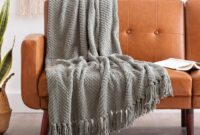Task lighting ideas for reading areas bring light to your favorite reading nook, creating a cozy and inviting atmosphere that enhances your reading experience. From the right intensity to ideal placement, discover how to illuminate your space effectively.
Task Lighting Types: Task Lighting Ideas For Reading Areas
When setting up a reading area, it is crucial to have the right task lighting to ensure optimal visibility and reduce eye strain. There are various types of task lighting options available, each with its own set of benefits for reading purposes.
Desk Lamps
Desk lamps are a popular choice for reading areas due to their versatility and focused illumination. They typically feature adjustable arms or heads, allowing you to direct the light exactly where you need it. Desk lamps come in various styles and sizes, making it easy to find one that fits your reading space perfectly.
Floor Lamps
Floor lamps are another excellent option for providing task lighting in reading areas. They offer ample lighting coverage and can be positioned next to a reading chair or sofa to illuminate the entire area. Floor lamps come in different heights and designs, allowing you to choose one that complements your overall decor.
Adjustable Wall Sconces
Adjustable wall sconces are a great choice for reading areas with limited space. These fixtures can be mounted on the wall next to a reading nook or bed, providing focused lighting without taking up valuable floor or table space. The adjustable arms or heads of wall sconces allow you to direct the light precisely where you need it for reading.
Each type of task lighting has its own advantages, so consider your reading area’s layout and your personal preferences when selecting the right option for your space. Whether you choose a desk lamp, floor lamp, or adjustable wall sconce, the key is to ensure that the lighting is bright enough to read comfortably without causing glare or shadows.
Ideal Lighting Intensity

When it comes to reading tasks, having the right lighting intensity is crucial to prevent eye strain and enhance focus. The optimal lighting intensity for reading areas typically falls between 300 to 500 lux.
Appropriate Light Bulb Wattage
- For reading areas, it is recommended to use light bulbs with wattage ranging from 60 to 100 watts. This range provides sufficient brightness without causing glare or harsh shadows.
- LED bulbs are also a great option as they offer energy efficiency and can provide the same brightness as traditional incandescent bulbs with lower wattage.
Adjustable Brightness Settings
Having task lighting with adjustable brightness settings allows for a customizable reading experience based on personal preferences and different lighting needs. This feature is especially useful for late-night reading sessions or when natural light varies throughout the day.
Looking to add a touch of tranquility to your living space? Explore Japanese zen home décor ideas that can transform your home into a peaceful retreat. Incorporate natural elements, minimalistic furniture, and soothing colors to create a harmonious environment.
Placement and Direction
![]()
Proper placement and direction of task lighting in reading areas are crucial for creating a comfortable and efficient reading environment. By focusing light onto reading materials without causing glare, you can enhance the reading experience and reduce eye strain.
Significance of Proper Placement
When placing task lighting in a reading space, consider positioning the light source above and slightly behind the reader’s shoulder. This angle helps direct the light onto the reading material without casting shadows or causing glare. Additionally, placing the light at the right height ensures that the light falls evenly on the page, minimizing strain on the eyes.
Impact of Angle and Height
- Angle: The angle of the lighting source plays a significant role in reading comfort. Position the light at a downward angle to prevent glare and shadows on the page. Adjust the angle based on the reader’s position and the type of reading material.
- Height: The height of the lighting source should be adjusted to suit the reader’s eye level. Placing the light too high or too low can create uneven lighting and cause discomfort. Aim to position the light at a height that allows for even illumination across the reading material.
Lighting Design Aesthetics

When it comes to creating a cozy and inviting reading environment, the aesthetics of task lighting play a crucial role. The right lighting design can enhance the overall look and feel of a reading area, making it more welcoming and comfortable for extended reading sessions.
Selecting Complementary Task Lighting Fixtures, Task lighting ideas for reading areas
Choosing task lighting fixtures that complement the room’s decor is essential for a cohesive and harmonious design. Consider the style, color, and material of the fixtures to ensure they blend seamlessly with the existing elements in the room. For example, a sleek and modern reading nook may benefit from minimalist and contemporary task lighting, while a traditional reading area could be enhanced with classic and elegant fixtures.
Creating a Cozy Reading Environment
Task lighting design can significantly contribute to creating a cozy and inviting reading environment. Soft and warm lighting can evoke a sense of comfort and relaxation, making it easier for readers to immerse themselves in their favorite books. By strategically placing task lighting fixtures to provide adequate illumination without causing glare, you can achieve a balanced and pleasant lighting scheme that enhances the overall ambiance of the reading area.
Illuminate your reading areas with these task lighting ideas to create a welcoming environment that encourages hours of reading enjoyment. Let light guide your reading journey and transform your space into a haven for book lovers.
For those who prefer a blend of traditional and contemporary styles, consider embracing the transitional style for modern homes. This design approach combines the best of both worlds, incorporating clean lines, neutral tones, and a mix of textures for a timeless look.
Living in a small space doesn’t mean sacrificing style. Discover eclectic design ideas for small homes that allow you to showcase your personality through a mix of patterns, colors, and unique pieces. Embrace creativity and make the most of every inch.




